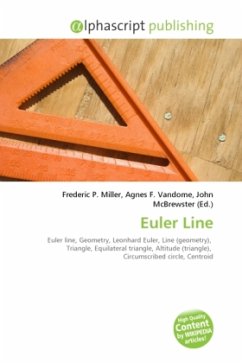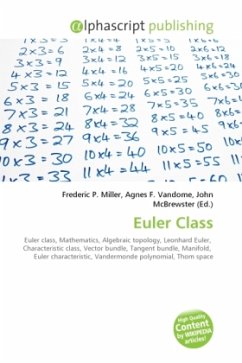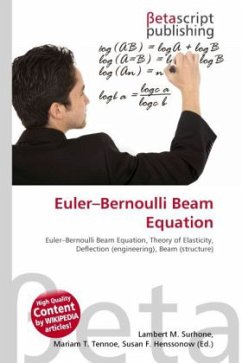
Euler Line
Versandkostenfrei!
Versandfertig in 6-10 Tagen
19,99 €
inkl. MwSt.

PAYBACK Punkte
10 °P sammeln!
In geometry, the Euler line, named after Leonhard Euler, is a line determined from any triangle that is not equilateral; it passes through several important points determined from the triangle. It passes through the orthocenter, the circumcenter, the centroid, and the center of the nine-point circle of the triangle.Euler showed that in any triangle, the orthocenter, circumcenter, centroid, and nine-point center are collinear. In equilateral triangles, these four points coincide, but in any other triangle they do not, and the Euler line is determined by any two of them. The center of the nine-p...
In geometry, the Euler line, named after Leonhard Euler, is a line determined from any triangle that is not equilateral; it passes through several important points determined from the triangle. It passes through the orthocenter, the circumcenter, the centroid, and the center of the nine-point circle of the triangle.Euler showed that in any triangle, the orthocenter, circumcenter, centroid, and nine-point center are collinear. In equilateral triangles, these four points coincide, but in any other triangle they do not, and the Euler line is determined by any two of them. The center of the nine-point circle lies midway along the Euler line between the orthocenter and the circumcenter, and the distance from the centroid to the circumcenter is half that from the centroid to the orthocenter.Other notable points that lie on the Euler line are the de Longchamps point, the Schiffler point, the Exeter point and the far-out point. However, the incenter lies on the Euler line only for isosceles triangles.The Euler line is its own complement, and therefore also its own anticomplement.












